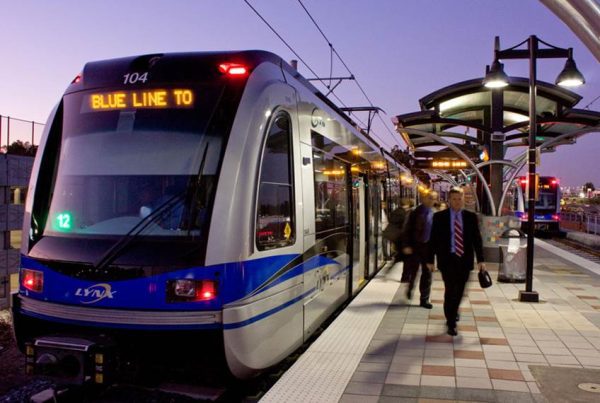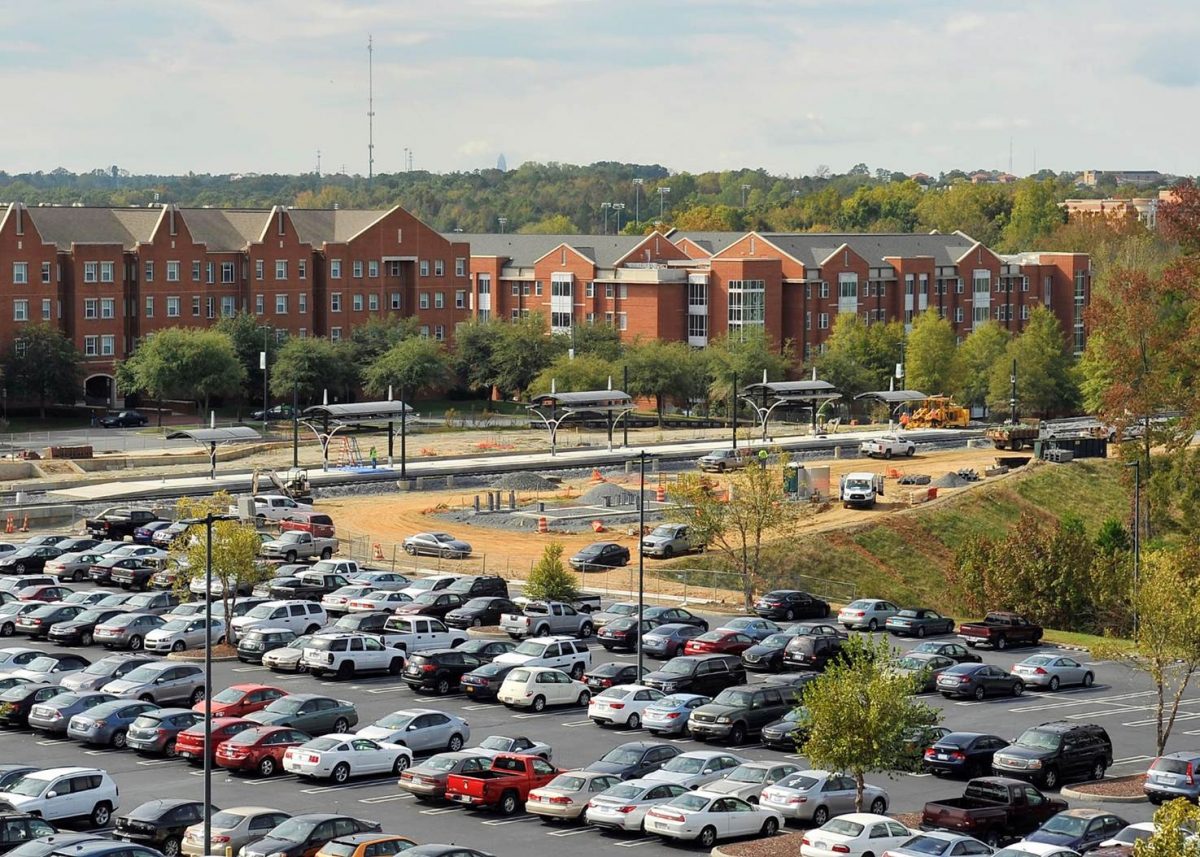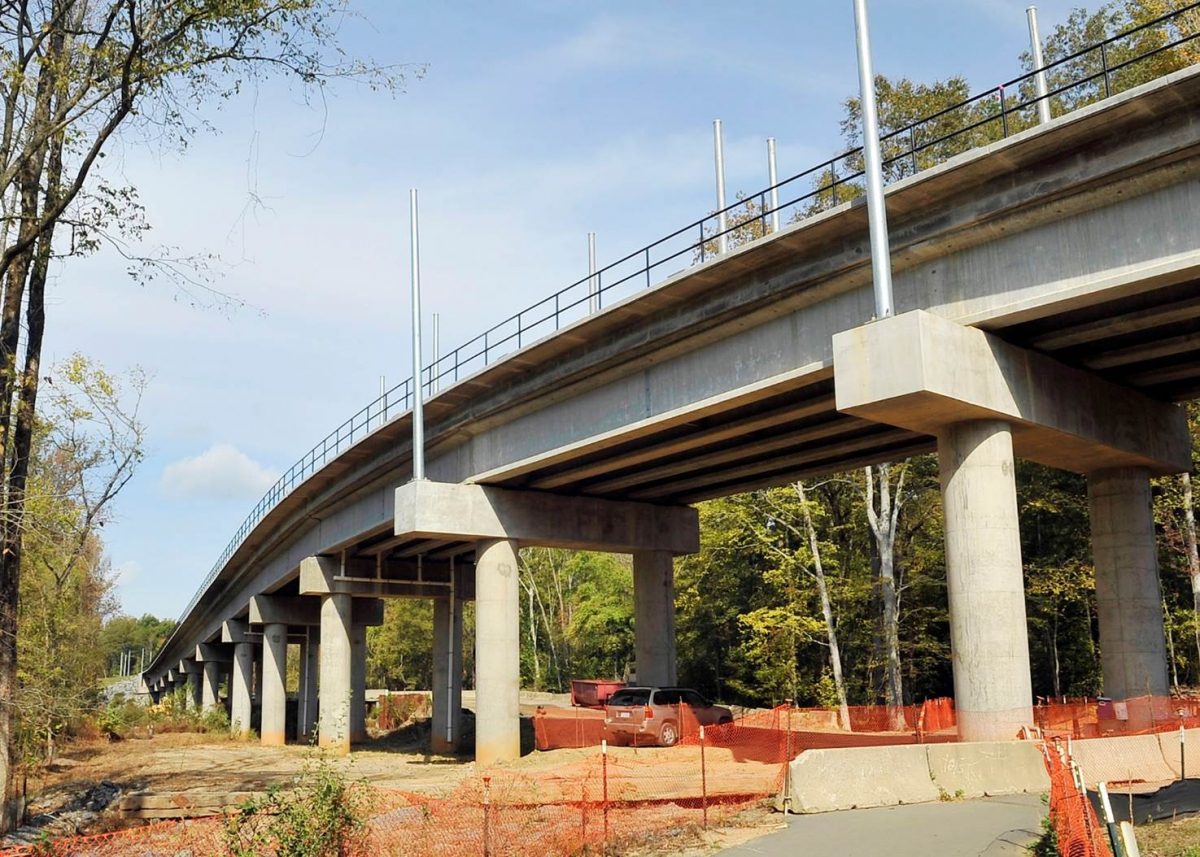Bike-share and other changes arriving with light rail to UNCC

Along with a new light rail station on the UNC Charlotte campus, the Blue Line Extension will mean transportation changes on- and off-campus – in parking patterns, bus routes and campus shuttles – and the debut of a bike-share program.
Many of the changes were outlined Tuesday night at a public forum on campus. The 9.3 -mile, 11-station extension of the Lynx Blue Line is due to open in August 2017, 10 years after the November 2007 launch of the light rail line from uptown south to I-485 outside Pineville.
The extension will reshape transportation options for the 28,000-student campus and its 4,000-some faculty and staff. Because UNC Charlotte was built in an era when virtually all development in the U.S. focused on cars, University City neighborhoods surrounding the campus lack strong pedestrian and bicycle amenities. Getting just about anywhere requires either a car or, if walking or biking, courage verging on the foolhardy. Bus service is available, but inconvenient and time-consuming for many potential users.
But as the light rail line is being built, the city of Charlotte is adding or improving sidewalks and pedestrian crossings and adding bicycle lanes around the station areas. The trip from the university to uptown is expected to take 22 minutes, a substantial improvement over current bus times.
Officials on Tuesday night outlined some of the significant changes:
A bike-share program on campus. This is in final negotiations with a provider, but it’s expected to offer 100 on-campus bikes for rent at 10 stations, according to Doug Lape, director of UNC Charlotte’s Parking and Transportation Services. Bike-share programs let users pick up a bike in one spot and drop it off at another. Typical programs – including one in center city Charlotte – require users to register and pay a daily or yearly fee. Fees haven’t yet been set for the UNC Charlotte program, which is expected to launch in spring, Lape said.
All-access transit passes. New ID cards for students and faculty/staff will have coding embedded that will allow them to be used as transit passes. Students will get all-access transit passes as part of the transportation service charge they pay – probably an additional $25 per semester. Faculty/staff will be able to purchase similar passes for about $50 a year, although those costs have not been finalized. Hillary Ryan DeLong, public and community relations specialist with the Charlotte Area Transit System, said the passes will be good for all rail transit and all buses except express buses.
Free parking at rail stations – with a catch. Along with the Blue Line Extension will come about 3,100 new parking spaces at stations along the route. The largest new parking facility will be the 1,500-space deck at the University City station. As one audience member noted Tuesday, “Parking on campus has been an absolute mess.” Yearly permits cost from a low of $210 to $600, and many students forego the permit and scramble to find spots nearby. This has raised a concern about whether students and others will forego on-campus parking in favor of free CATS parking spots.
Lape said the CATS parking decks at the University City and the J.W. Clay stations are intended for people riding the light rail. DeLong of CATS said the plan is for parking at those decks stations to be free – as long as you have paid for a transit ticket. You’ll have to swipe your transit ticket to get out of the deck, she said. The university ID cards won’t work at the CATS decks.

Parking lot on the UNC Charlotte campus next to the under-construction light rail line near Wallis Hall. Photo: Wade Burton/UNCC
Improved shuttle service on campus. CATS operates three on-campus shuttle routes, and that service will expand with the opening of the light rail. A campus shuttle is expected to be at the main on-campus station every five minutes. Service hours will be extended to include late night, weekend and summer service.
Changes in CATS bus routes. CATS is working on changes to routes that serve the university and nearby areas – primarily routes 11 and 29. One example DeLong cited is that bus 29, a cross-town route from SouthPark mall to UNC Charlotte, will become two routes, one from SouthPark to a bus center at the former Eastland Mall and the other from Eastland to the university. CATS is studying adding feeder routes at the light rail stops, she said. For more information see CATS website.
Daily ridership is expected to be 25,000. Encouraging ridership may lessen the parking pressures on campus. With the light rail, Lape said, “We may not have to continue to build parking.”

Rail line under construction on the UNC Charlotte campus. Photo: Wade Burton/UNCC